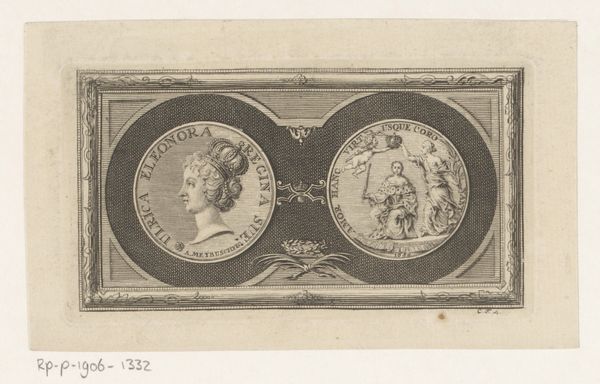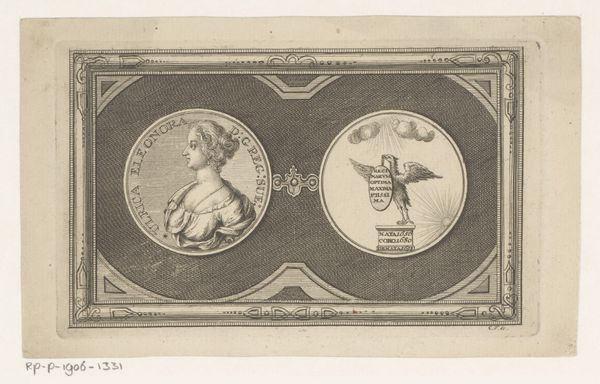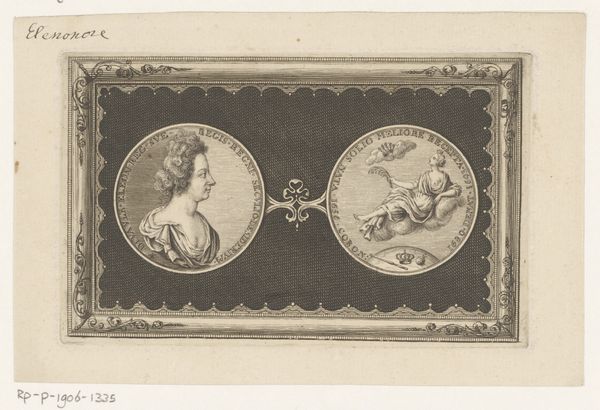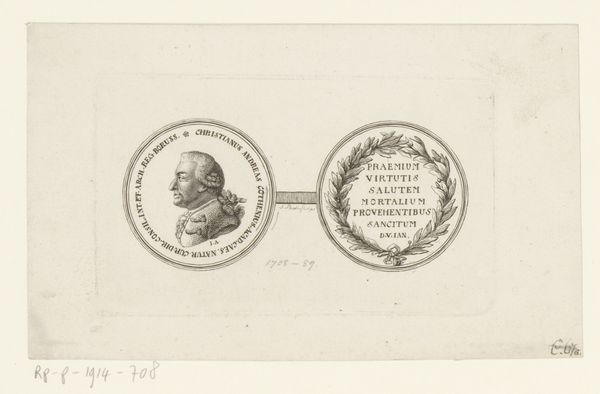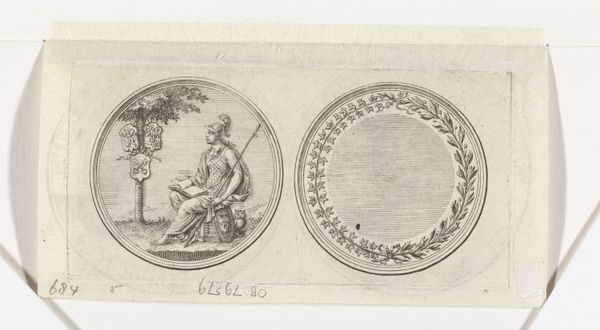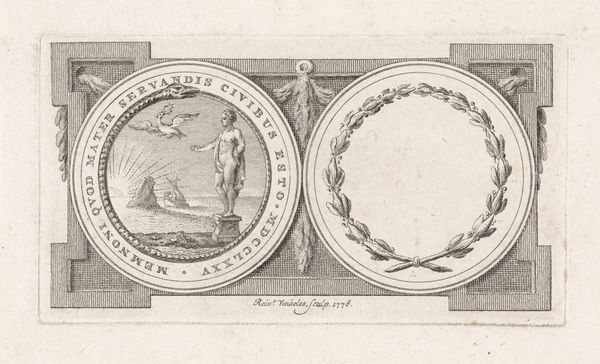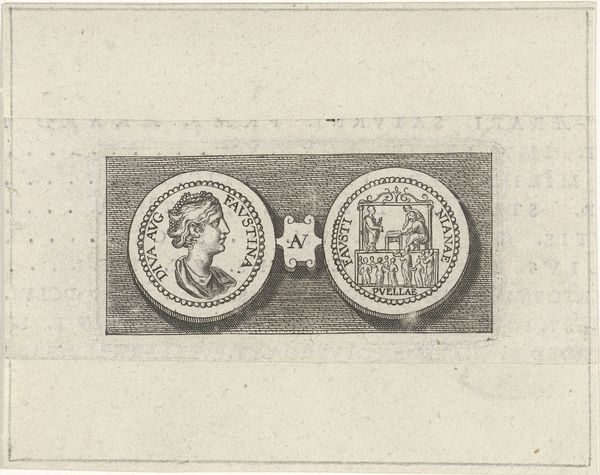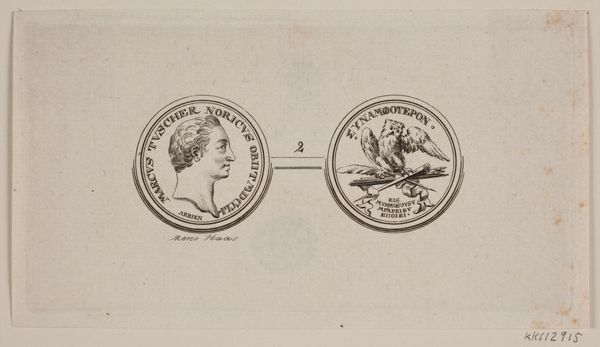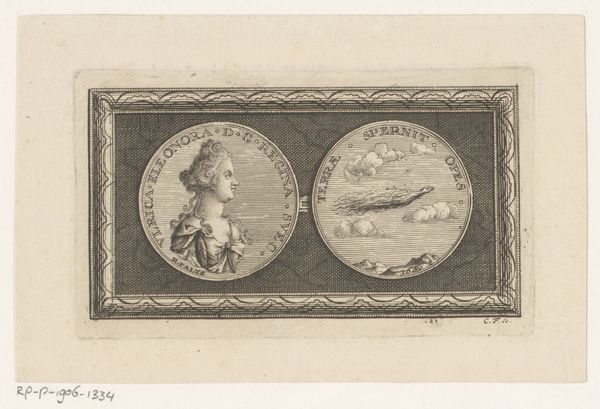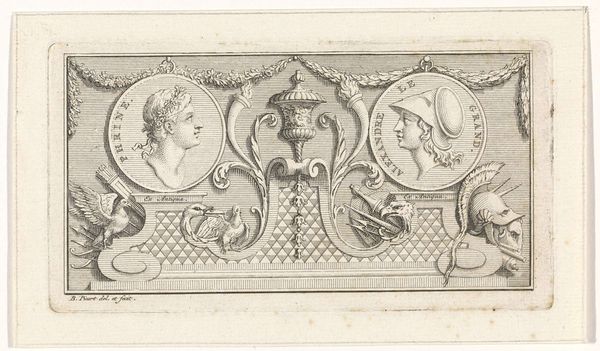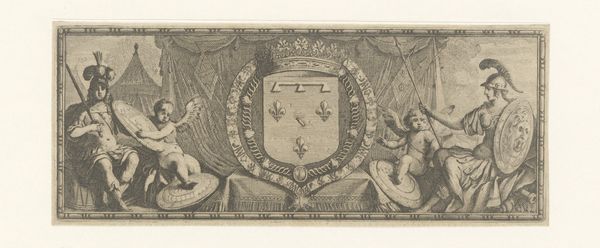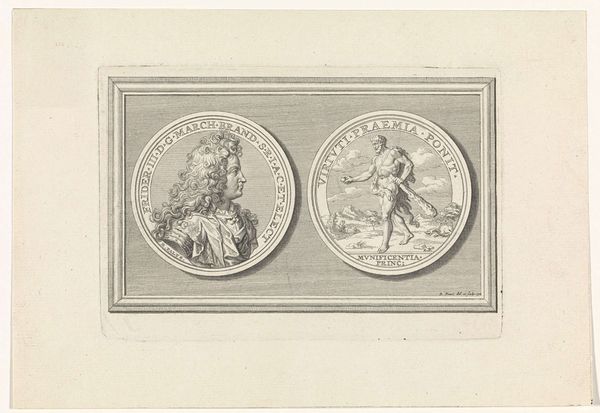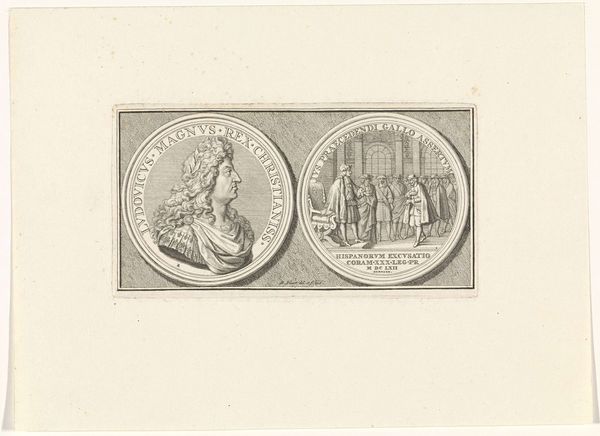
Medaille met het portret van Ulrika Eleonora en tegenzijde 1705 - 1769
0:00
0:00
christianfritzsch
Rijksmuseum
print, engraving
#
portrait
#
baroque
# print
#
history-painting
#
engraving
Dimensions: height 89 mm, width 143 mm
Copyright: Rijks Museum: Open Domain
Curator: This is a fascinating piece—a Baroque engraving titled "Medaille met het portret van Ulrika Eleonora en tegenzijde" by Christian Fritzsch, dating somewhere between 1705 and 1769. It's currently held at the Rijksmuseum. Editor: You know, the first thing that strikes me is how much it resembles currency or some sort of official emblem. A little cold, maybe, but also quite elegant with those intertwined circles. Curator: Exactly! It’s meant to project authority and legitimacy. Notice how Ulrika Eleonora's profile, with the inscription "Ulrica Eleonora Regina," aligns perfectly with classical portraiture meant for dissemination. The symbolic weight is undeniable. Editor: And what about the other side, that coronation scene? The symbols there feel heavy. Are those the right symbols, though, to inspire widespread support? She's so passive, kneeling, with an expression I cannot quite parse. Curator: That scene likely depicts her receiving the crown. While to modern eyes, it might seem passive, consider its historical context. Divine Right dictated such symbolism. Royal power, bestowed. I would suggest, given what follows in her reign, that it symbolizes strength. Editor: I see what you mean. The cultural memory woven into this piece is so different from my own. And this Baroque style is like heavy brocade on power – everything gilded, formally composed. Curator: Precisely! And remember that the choice of engraving, as a printmaking method, meant multiple reproductions. Wider distribution equates to amplified message: Ulrika Eleonora as the rightful, divinely appointed queen. Editor: Still, there's something almost unsettling about that idealization. So polished, so carefully constructed. What parts were "constructed", do you think? Curator: Undoubtedly, aspects of her presentation were deliberate. Hairstyles, dress, even the subtle angle of her jaw—all carefully chosen to reinforce the image of an idealized ruler. Editor: It almost makes one question the real Ulrika, who she truly was outside these propagandistic images. Which probably misses the point. These symbols are her truth in one specific, very real, historic context. Curator: Well said. That duality is what makes such art perpetually interesting, I think. The power, the art, the era, condensed in an emblem. Editor: A potent little portal, revealing as much about those who made it as the subject it depicts. I think I may spend some more time unpacking what it means to me. Thanks!
Comments
No comments
Be the first to comment and join the conversation on the ultimate creative platform.
